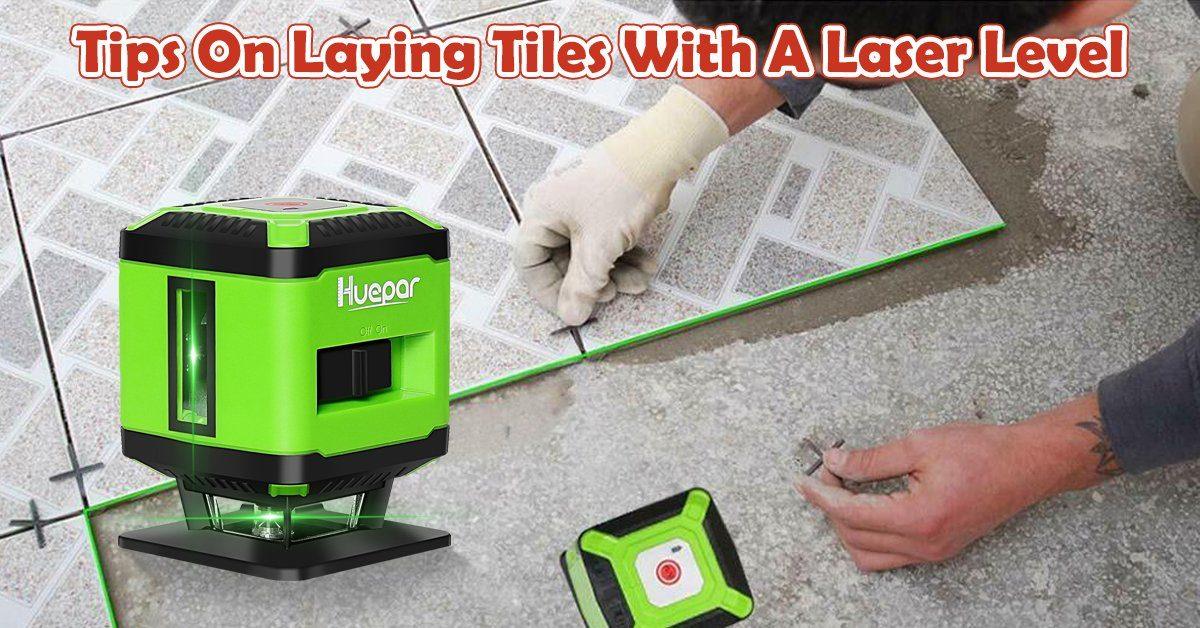One of the best benefits of having a laser level in your toolbox is that it can be used for various tasks. Whether you're involved in a large construction project or a simple home improvement project, a laser level will certainly come in handy. Another advantage of a laser level is that you can use it indoors and outdoors.
The great thing about using a laser level indoors is that you won't have any problems finding the beam. Since indoor sunlight does not affect the visibility of the rays, you do not need to use a laser detector to intercept the beam.
If you're working on a home renovation project or simply sprucing up your interiors, using a laser level can help you get the job done efficiently. Here are some indoor tasks where a laser level can be used.
Using laser levels indoors
1. Hanging frame or curtains --- Huepar 9011G DIY cross line laser self-leveling
 Unless you want a Leaning Tower of Pisa-style installation, you'll want to make sure the frames or curtains you hang are perfectly aligned. You don't have to be a perfectionist to be annoyed by crooked frames and curtains. While attaching objects to the wall may seem simple, the task is anything but easy. To make the job much easier, you can use any type of laser level. However, most people use line lasers because they are sufficient to project visible, horizontal beams.
Unless you want a Leaning Tower of Pisa-style installation, you'll want to make sure the frames or curtains you hang are perfectly aligned. You don't have to be a perfectionist to be annoyed by crooked frames and curtains. While attaching objects to the wall may seem simple, the task is anything but easy. To make the job much easier, you can use any type of laser level. However, most people use line lasers because they are sufficient to project visible, horizontal beams.
To hang a frame or curtain using a laser level, you must first determine the height of the top edge of the frame or curtain. If you want to install a curtain rod, you should measure about 4 inches above the window. After measuring the height, make a mark on the wall anywhere within the measurement.
Second, turn on your laser. Adjust his laser so that the beam passes horizontally through the height you marked on the wall.
Third, level your laser. Adjust the level if it is a manual laser level or let it self-level if it is an automatic self-leveling model. After leveling, attach your laser level to the wall with suction cups or a bracket.
When hanging a frame, measure the distance between the top of the frame and its hanging mechanism. Mark this measurement on the wall using the projected beam as a reference line for the top of the frame. Then drive a nail into the mark on the wall. Finally, hang the frame and align its top with the laser beam.
When you hang a curtain rod, the process is easier than hanging a frame. You just need to measure the width of the curtain rod. Finally, install the brackets at the ends of the width and along the projected beam.
2. Installing cabinets---Huepar 621G laser level cross line with 2 vertical points
When it comes to panel installation, a cross line laser can make the task quick and easy. This line laser can project a vertical and a horizontal line at the same time. Because of this, you can use it for both transferring stud locations and aligning cabinets. Before using a laser level for cabinet installation, mount the laser level on a tripod a few inches from the wall where your cabinets will be placed.
Anyone who has ever installed kitchen cabinets knows how time-consuming marking stud locations can be. However, with a cross line laser, the task can be completed in no time. First, locate the studs using a stud finder. Then mark their centers. After that, turn on your laser and aim its vertical beam so that it passes through the pen mark.
Next, measure the height of your kitchen cabinet from top to bottom. Then mark this measurement on the wall. Aim your laser's horizontal beam over the marked bottom portion of the kitchen cabinet. Next, install a latch or support rail below this bottom line and screw it into the pin marks.
Finally, aim your laser's horizontal beam so that it passes through the marked top of the kitchen cabinet. Place your cabinet on top of the ledger and align its top with the horizontal bar. You can then screw your cabinet into the stud.




